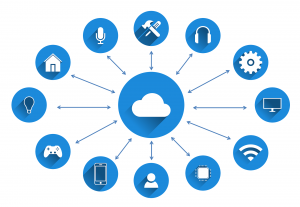3.8. Trends in Personal Computing
A personal computer is designed to be a general-purpose device, able to solve many different types of problems. As the technologies of the personal computer have become more commonplace, many of the components have been integrated into other devices that previously were purely mechanical. The definition or description of what defines a computer has changed. Portability has been an important feature for most users. Here is an overview of some trends in personal computing.
Portable Computers
Portable computing today includes laptops, notebooks and netbooks, many weighing less than 4 pounds and providing longer battery life. The MacBook Air is a good example of this: it weighs less than three pounds and is only 0.68 inches thick!
Netbooks (short for Network Books) are extremely light because they do not have a hard drive, depending instead on the Internet “cloud” for data and application storage. Netbooks depend on a Wi-Fi connection and can run Web browsers as well as a word processor.
Smartphones
While cell phones were introduced in the 1970s, smartphones have only been around for the past 20 years. As cell phones evolved they gained a broader array of features and programs. Today’s smartphones provide the user with telephone, email, location, and calendar services, just to name a few. They function as a highly mobile computer, able to connect to the Internet through either cell technology or Wi-Fi. Smartphones have revolutionized computing, bringing the one feature PCs and laptops could not deliver, namely mobility. The Apple iPhone was introduced in January 2007 and went on the market in June of that same year. Its ease of use and intuitive interface made it an immediate success and solidified the future of smartphones. The first Android phone was released in 2008 with functionality similar to the iPhone.
Tablet Computers
A tablet computer uses a touch screen as its primary input and is small enough and light enough to be easily transported. They generally have no keyboard and are self-contained inside a rectangular case. Apple set the standard for tablet computing with the introduction of the iPad in 2010 using iOS, the operating system of the iPhone. After the success of the iPad, computer manufacturers began to develop new tablets that utilized operating systems that were designed for mobile devices, such as Android. The Samsung Galaxy and Amazon Fire are both popular competitors to the iPad.
Integrated Computing and Internet of Things (IoT)

Along with advances in computers themselves, computing technology is being integrated into many everyday products. From automobiles to refrigerators to airplanes, computing technology is enhancing what these devices can do and is adding capabilities into our everyday lives thanks in part to IoT.
IoT is a network of billions of devices, each with their own unique network address, around the world with embedded electronics allowing them to connect to the Internet for the purpose of collecting and sharing data, all without the involvement of human beings (Ranger, 2018). Objects ranging from a simple light bulb to a fitness band such as FitBit to a driverless truck are all part of IoT thanks to the processors inside them. A smartphone app can control and/or communicate with each of these devices as well as others such as: electric garage door openers, kitchen appliances, thermostats (like Nest), home security systems, and audio speakers.
“Chapter 2: Hardware” from Information Systems for Business and Beyond (2019)by David Bourgeois is licensed under a Creative Commons Attribution-NonCommercial 4.0 International License, except where otherwise noted.

